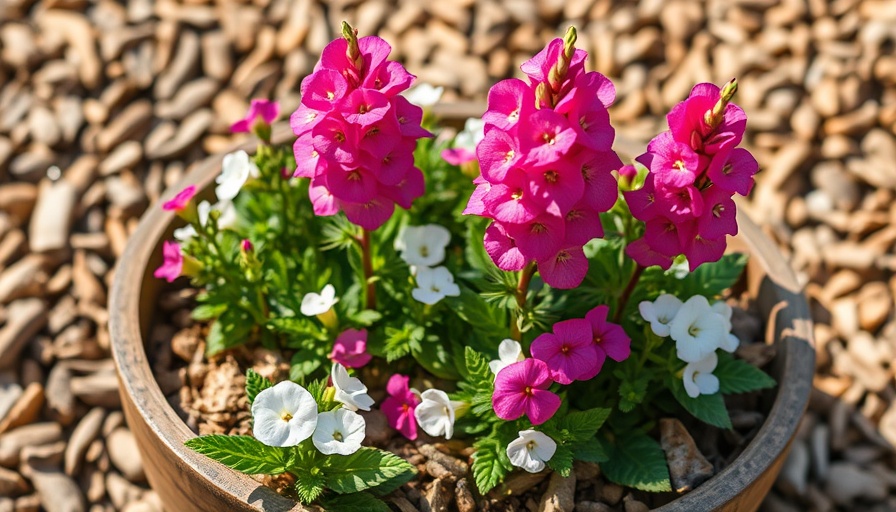
Understanding Snapdragons: A Gardener's Favorite
Beautiful and versatile, snapdragons are one of the standout stars in the gardening world. These delightful flowers successfully bring charm to cottage gardens and elevate container displays with their vibrant colors and charming shapes. Ideal for gardeners of all experience levels, snapdragons offer an array of choices, from tall cultivars that can tower over your other plants to delicate trailing varieties suitable for hanging baskets.
Choosing the Right Container for Successful Growth
When it comes to growing snapdragons in pots, understanding the right container is vital. While snapdragons are quite forgiving when it comes to pot size, they do thrive in larger pots that allow their roots sufficient space to grow. An ideal size? An eight-inch wide pot works well for one plant, but for multiple snapdragons or larger types, you might want to opt for a larger container. Materials matter too; heavy terracotta or concrete pots are excellent choices for taller varieties, ensuring they remain stable even on windy days.
Soil Selection: Create the Perfect Mix
The key to thriving snapdragons lies in the soil you choose. They prefer well-draining, rich, and moisture-retentive soils. You can create a wonderful soil mix with compost, coconut coir, and pumice that not only retains moisture but also provides the essential nutrients the plants need. Consider trying premixed potting soils designed for container gardening that cater specifically to the needs of flowering plants.
Lighting Conditions: Find the Best Spot
Light plays a crucial role in maintaining healthy snapdragons. These flowers love the sun and typically require at least eight hours of direct sunlight daily. However, if you notice that your snapdragons lean towards the light, it might be time to reposition them to a brighter location. While they can tolerate partial shade, especially in warmer climates, optimal sunlight will yield the most vibrant blooms.
Water Management: Keeping Your Snapdragons Happy
One of the biggest challenges in container gardening, especially with snapdragons, is ensuring proper watering. Given their fibrous root system, it’s crucial to maintain consistent moisture levels—make sure the pot drains well to prevent root rot. Regular watering is essential, focusing on the soil rather than the leaves to help prevent mold issues.
Series and Cultivar Selection: What to Plant
Snapdragons come in a variety of cultivars and series, which can affect their color, growth height, and blooming times. You might want to select from the dwarf varieties for compact spaces or go for the taller types for impressive displays. Researching the specific needs and growth patterns of different cultivars can help you make informed decisions that will keep your outdoor displays interesting and appealing.
Maintaining Your Potted Snapdragons
Once planted, keeping an eye on your snapdragons is essential. Regular deadheading—removing spent blooms—can promote a longer flowering period. Watch out for common garden pests such as aphids and spider mites, keeping your plants healthy and vibrant. You may also consider a light application of organic fertilizer to help maintain their health.
The Joy of Container Gardening
Container gardening is not just about practicality; it brings tremendous joy. Snapdragons can enhance any space, whether it’s on a patio, balcony, or a small garden corner. Taking care of these lovely flowers nurtures a deeper connection with nature, allows for creative expression in garden design, and can even foster mindfulness as you nurture and watch your plants flourish.
Get Started: Breathing Life into Indoor and Outdoor Spaces
Ready to dive into gardening? Growing snapdragons in pots is an accessible yet rewarding venture that can add color and life to your surroundings. Grab your gardening gloves and tools, and step outside to breathe life into your floral displays!
 Add Row
Add Row  Add
Add 




Write A Comment